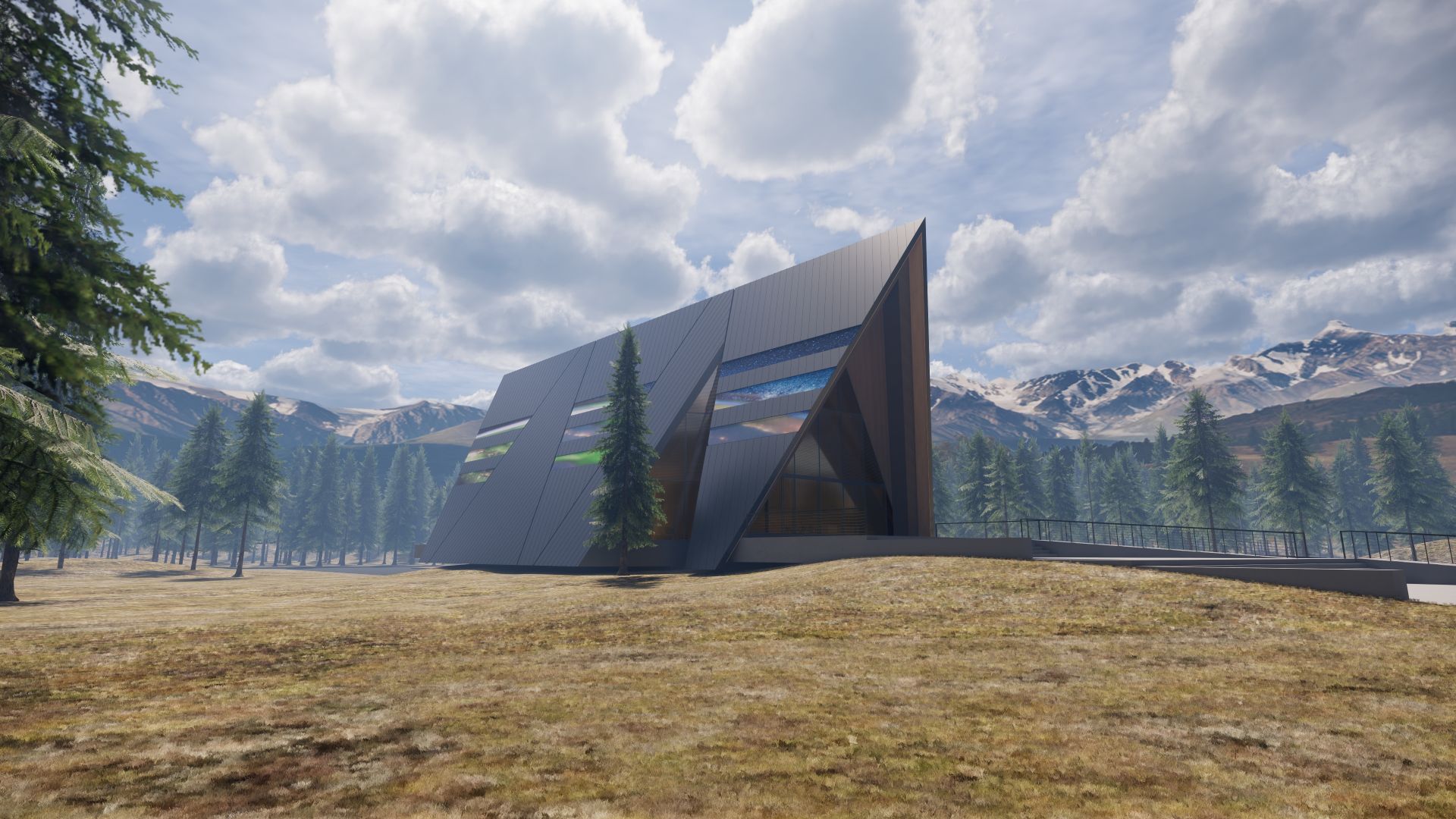Artistic rendering of the Hermes low-power demonstration reactor, a scaled-down demo of the KP-FHR. (Image: Kairos Power)
The Nuclear Regulatory Commission recently issued a draft safety evaluation report indicating initial acceptance of Kairos Power’s source term methodology for its fluoride salt–cooled high-temperature reactor (KP-FHR).
[CLICK IMAGE TO ENLARGE] A comparison between MOOSE results and the analytical solutions for the fractions of point defects in an irradiated spherical Ni grain with a 500 nm radius. The grain boundary/surface at x = 500 nm is assumed perfect and neutral. (Source: From Frontiers in Materials paper "Surface and Size Effects on the Behaviors of Point Defects in Irradiated Crystalline Solids")
By using a combination of physics-based modeling and advanced simulations, Texas A&M University researchers say they have found the key underlying factors that cause radiation damage to nuclear reactors, which could provide insight into designing more radiation-tolerant, high-performance materials.
The Molten Chloride Reactor Experiment will be built at Idaho National Laboratory to demonstrate criticality in a fast-spectrum salt-cooled reactor within five years. (Image: Southern Company)
Artist’s conception of Oklo’s Aurora powerhouse. (Image: Gensler)
A set of graphite rods was exposed to hot plasma in the DIII-D tokamak. Researchers measured the ablation behavior under extreme heat and particle flow to simulate conditions experienced by spacecraft heat shields during atmospheric entry. (Image: General Atomics)
As a spacecraft on a research mission hurtles at up to 100,000 miles per hour toward the surface of a gas giant like Jupiter, the atmospheric gases surrounding the spacecraft turn to plasma, and spacecraft temperatures increase to more than 10,000 °F.
The Karachi nuclear plant in southern Pakistan. (Photo: CNNC)
Hot functional testing at Unit 3 of Pakistan’s Karachi nuclear power plant has been completed ahead of schedule, and the reactor has entered the fuel loading stage, China National Nuclear Corporation announced on November 11.
(CLICK IMAGE TO ENLARGE) The researchers’ experimental layout is depicted here. In (b), the neutron chopper is depicted without the mesh guard shown in (d), a photograph of the experimental layout that includes the Cf-252 source tank at left. (Composite image: Joyce, et al., “Wireless information transfer with fast neutrons,” doi.org/10.1016/j.nima.2021.165946)
Swapping conventional electromagnetic radiation for fast neutrons, a team of research engineers at Lancaster University in the United Kingdom, working with the Jozef Stefan Institute of Slovenia, report that they have successfully transmitted digital information wirelessly using nuclear radiation. The researchers’ attempts to transmit words and numbers using standard ASCII code “were 100 percent successful,” according to a November 10 press release from Lancaster University. Their research will be published in an upcoming issue of Nuclear Instruments and Methods in Physics Research and is now available online.
Darlington nuclear power plant. (Photo: OPG)
The Canadian Nuclear Safety Commission (CNSC) has amended Ontario Power Generation’s (OPG) operating license for its Darlington nuclear power station near Clarington, Ontario, allowing the company to produce the medical radioisotope molybdenum-99 using Darlington’s Unit 2 CANDU reactor. OPG subsidiary Laurentis Energy Partners, in conjunction with BWXT Medical, is leading the program to produce Mo-99 at Darlington.
The TRISO-X fuel pebble shown here contains TRISO particles—HALEU-bearing kernels of oxide and carbide in alternating layers of pyrolytic carbon and silicon carbide. (Image: X-energy)
X-energy and Centrus Energy announced last week that they have completed the preliminary design of the TRISO-X fuel fabrication facility and have signed a contract for the next phase of work. The planned facility would produce TRISO fuel particles and pack those particles into fuel forms, including the spherical graphite “pebbles” needed to fuel X-energy’s Xe-100 high-temperature gas reactor.



















